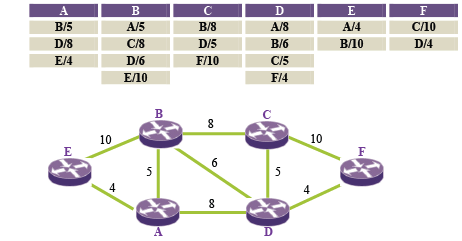TRILL uses ISIS to exchange link state and cost between all RBridges in the network. Each node maintains the same link state database network representation. Like ISIS and OSPF, the Dijkstra's Algorithm is used to determine the best path to the egress RBridge. Using the reference RBridge network diagram in the following figure, the Link State Database representation is also shown. The information stored in the Link State Database also allows each RBridge to calculate the same distribution tree and eliminates the need to have a separate spanning tree.

1G = 20000 metric
10G = 2000 metric
40G = 500 metric
100G = 200 metric
(LAG metric) = (Metric of any active LAG member) / (number of port in LAG group, active or not)
This means that a LAG group of five 40G ports with one of the ports down is (LAG metric) = 500 / 5 = 100. However, if all the ports in the group are down then the metric is MAX value, 16777214.

 Print
this page
Print
this page Email this topic
Email this topic Feedback
Feedback